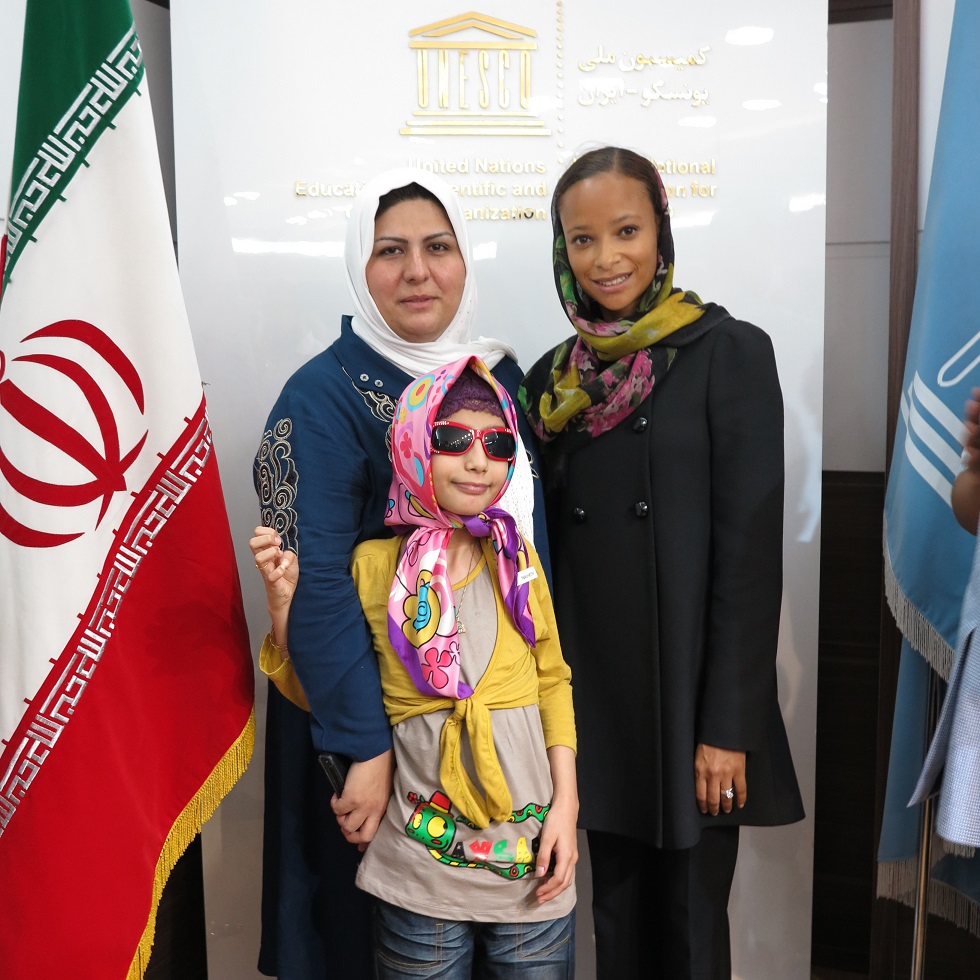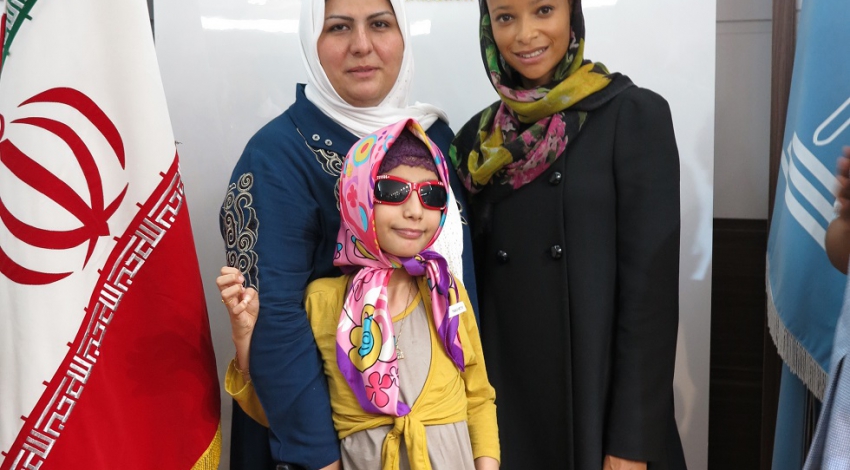 Director of the UNESCO Cluster Office in Tehran with a visually impaired girl and her mother.[/caption]
Director of the UNESCO Cluster Office in Tehran with a visually impaired girl and her mother.[/caption]In line with UNESCO�s programme for Management of Social Transformations (MOST) and the topic of social inclusion, the Iranian National Commission for UNESCO organized an exhibition of drawings and handicrafts by disabled children, which took place on 12-13 August.

A visually impaired boy and his mother at the art exhibition.
The Director and Representative of UNESCO�s Cluster Office in Tehran, Ms. Esther Kuisch Laroche, delivered the key note speech at the opening event on 12 August. In her remarks, Ms. Kuisch Laroche mentioned that social inclusion has always been at the heart of UNESCO�s mandate and work.
She talked about UNESCO�s work to promote inclusive education policies, programmes and practices to ensure equal education opportunities for persons with disabilities. Ms. Kuisch Laroche also highlighted the importance of arts education, and the singular role that culture and arts can play in promoting dialogue and greater understanding and appreciation of others.
The event was attended by a number of prominent personalities and national celebrities, as well as by disabled children and their parents and teachers.�During the closing ceremony, the Secretary General of the Iranian National Commission presented Ms. Kuisch Laroche with a book on Iran's cultural heritage sites.

Dr. Mohammad Reza Saeidabadi, Secretary-General of the Iranian National Commission for UNESCO, and Ms. Esther Kuisch Laroche, Director of the UNESCO Cluster Office in Tehran.

Carpets and other handicrafts made by disabled children.

Ms. Esther Esther Kuisch Laroche delivering her key note speech.
By The United Nations In Iran
The Iran Project is not responsible for the content of quoted articles.











